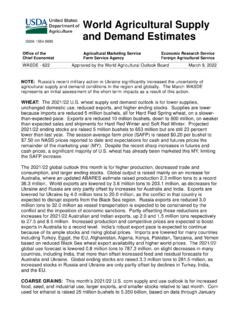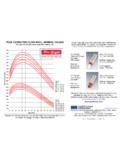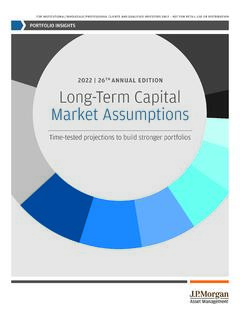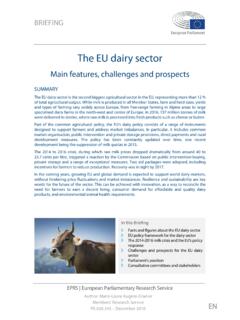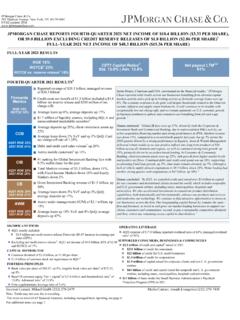Transcription of Electric vehicles - Deloitte
1 Electric vehiclesSetting a course for 2030 Deloitte s Global Automotive team helps automotive companies execute innovative ideas in exceptional ways. We offer a global, integrated approach combined with business and industry knowledge to help our clients excel anywhere in the the authors for more information or read more about our services on 2 Part 1: Global progress and forecast 3 EVs in regional markets 42030 sales forecast 6 Four factors driving growth 7 Part 2: New landscape, new approach 12 Segmenting the market 12 Checklist for the journey ahead 21 Endnotes 232 Electric vehiclesSINCE Deloitte LAST presented a forecast for Electric vehicle (EV) sales, in January 2019, the EV market has made great strides, and not just in terms of sales.
2 Original equipment manufacturers (OEMS) have invested billions to deliver new electrified models, from R&D to factory redesign. Consumer attitudes have evolved. Government interventions have pushed forward and pulled back. But then COVID-19 completely disrupted global sales and manufacturing. In this context, a revised forecast based on updated data is needed. By examining the current state of the EV market worldwide and noting the many factors fostering growth in various directions (Part 1 of this report), we have formed conclusions about how the market will take shape over the next decade. The significant growth of EVs leading up to 2030 will present major opportunities and challenges for traditional OEMs, new-entrant OEMs, captive finance companies and dealerships.
3 In particular, traditional OEMs will find insights in this report that can help them re-prioritise their customers and strategies in a volatile competitive to seizing opportunities and man-aging risks is taking a new approach to market segmentation. We detail one such approach in Part 2 and apply it as a use case to one major market, the United Kingdom, to inform and inspire OEMs and other stakeholders globally. By letting today s insights fuel the journey for the next ten years, we can accelerate beyond the obstacles the pandemic has brought and toward a future where EVs take centre the COVID-19 pandemic shook up the automotive industry along with every other industry Electric vehicles were moving steadily into the spotlight.
4 The combined annual sales of battery Electric vehicles and plug-in hybrid Electric vehicles tipped over the two-million- vehicle mark for the first time in 2019. This much-anticipated milestone may have become overshadowed by economic uncertainty and changed consumer priorities, but there is value in taking stock of the Electric vehicle market even now. In this report, we use the term Electric vehicles (EVs) to refer to battery Electric vehicles (BEVs), as well as plug-in hybrid Electric vehicles (PHEVs).1 Unless specifically stated, our analysis has considered both forms of drivetrain. BEVs are powered solely by batteries. They use an Electric motor to turn the wheels and produce zero emissions.
5 PHEVs are capable of zero-emission driving, typically between 20 and 30 miles, and can run on petrol or diesel for longer trips. As the name suggests, they need to be plugged in to an electricity supply to maximise their zero-emission a course for 2030 Part 1: Global progress and forecastTHE EV MARKET S collective accomplishments over the past two years off er hope, despite the short-term impact of COVID-19: a pattern of continued growth, which is expected to be sustained throughout the 2020s. As BEV and PHEV sales surpassed two million vehicles in 2019 (see fi gure 1), EVs staked their claim on a per cent share of all new car sales last year. Looking back at BEVs in 2019, they accounted for 74 per cent of global EV sales: an increase of six percentage points since 2018.
6 This rise was partly stimulated by new, stricter European emissions standards that persuaded manufacturers to favour the production and sale of zero-emission vehicles . Another factor is the advanced state of the BEV market in China, compared to the rest of the world. Although BEVs are still the dominant EV technology in the United States and Europe, they command a smaller share of the market than in the last time Deloitte reported on EV sales, signifi cant regional disparities in growth have sur-faced. For example, sales of EVs grew by 15 per cent in 2019 compared to 2018, driven by the growth of BEVs in Europe (+93 per cent), China (+17 per cent) and other regions (+22 per cent).
7 In con-trast, the United States market for BEVs fell 2 per cent (see fi gure 1). Then, in the fi rst half of 2020, COVID-19 slowed down the growth rate of EV sales, or sent it into decline, across various regions. The speed of recovery is expected to vary by : Deloitte analysis, IHS Markit, Insights | 1 EVs: annual passenger-car and light-duty vehicle sales in major regionsChina BEVEV shareChina PHEVE urope BEVE urope PHEVUS BEVUS PHEVO ther BEVO ther sold (in thousands)Market share4 Electric vehiclesBut generally speaking, the course seems clear for growth over the next decade, despite the potential lasting impact of COVID-19 on total car sales over the next three years. To under-stand how things might continue, we need to understand what s been taking place across the various regional markets over the past year.
8 EVs in regional markets EUROPEE urope s EV sector saw significantly more growth than other regions in 2019. The Nordics and the Netherlands continued to lead the way; Norway achieved 56 per cent market share, and two of the top ten best-selling cars in Holland were The United Kingdom and some other countries reported triple-digit growth for the year. Favour-able government policies and a change in consumer attitudes were the catalysts, driven primarily by growing concerns about climate change. Climate change rose to the top of many European governments agendas. The United Kingdom committed to a target of net zero emissions by 2050, and proposed a ban on the sale of all polluting vehicles by Germany plans to cut greenhouse gas emissions by 40 per cent by the end of 2020, by 55 per cent by the end of 2030 and up to 95 per cent by the end of 2050, compared to 1990 the growth seen in 2019, mainstream adop-tion of EVs has been, so far, hindered by the limited number of models available to the European market and consumer perceptions regarding insufficient charging infrastructure in some The outbreak of COVID-19 and national lockdown measures impacted total car sales in Europe.
9 As showrooms closed their doors and manufacturers halted production, but EV sales have held up well in comparison to their internal combustion engine (ICE) equivalents. In the first four months of 2020, in the European Union (EU), demand for new pas-senger cars contracted by per cent, but in April 2020 the first full month with COVID-19 restric-tions in place registrations of new passenger cars in the EU posted a year-on-year decline of per cent, with some major markets reporting declines of over 95 per cent But EV sales in Western Europe only fell by 31 per cent in April, with some countries actually reporting modest year-on-year growth albeit against a low continues to dominate the EV market, accounting for half of all vehicle sales.
10 Sales in the second half of 2019 turned out lower than previ-ously expected after some subsidies available to Chinese consumers were This considerably eroded the consumer demand for EVs, and total yearly sales dropped: PHEV sales fell by 9 per cent and BEV sales fell to a 17 per cent growth rate from 2018 to On a positive note, a slowdown in the sales of ICE vehicles in the region means that the EV market share in China actually continues to dominate the EV market, accounting for half of all vehicle a course for 2030 China s slowdown in the second half of 2019 affected global EV sales figures, but neither the slashed subsidies nor the impact of COVID-19 should impact EV sales significantly in the long term.










